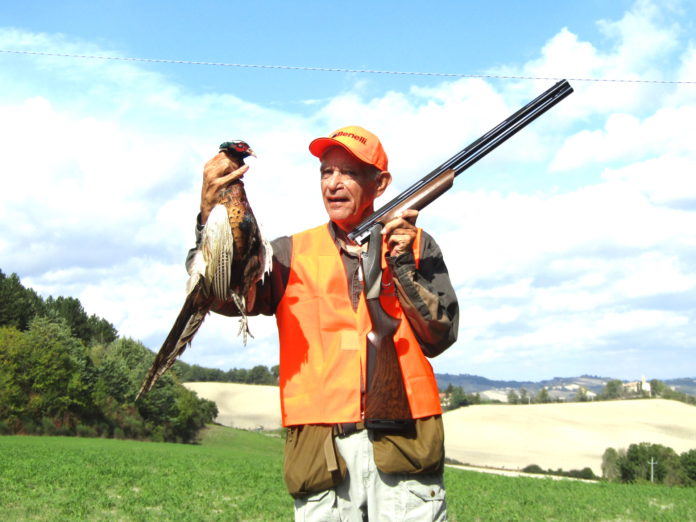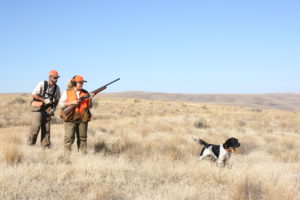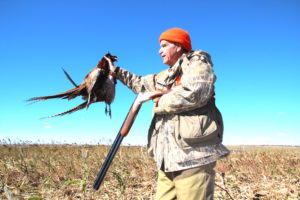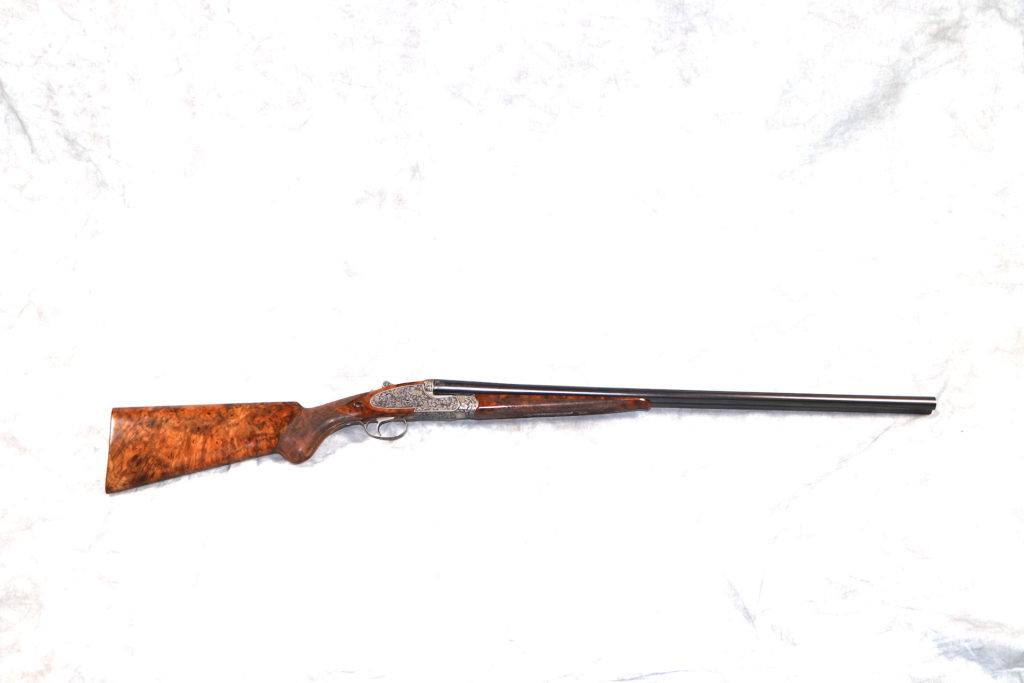
BY STEVE COMUS
If the dove hunt is considered the general opening of the hunting seasons each year, then the upland hunts are harbingers that fall has arrived. As the leaves change color and nights become nippy, it’s time to head to the fields for upland hunting action.
Upland game hunting is something that virtually all hunters can do and something that is a whole lot of fun while getting some of the best table fare nature has to offer. And it happens during a time of the year when the weather is great.
Although upland hunting includes mammals like rabbits, the term usually conjures up visions of birds like quail, partridge, grouse and pheasants.
This means shotguns and quick shots at rising birds as they flush from cover. Classically, it also means pointing dogs coursing the fields, locking-up when they find birds hunkered down and hiding in the brush.
When upland birds flush from cover, it is crucial that the hunter identify the bird and then bring the shotgun on-target, all in a smooth series of moves that put the shot payload onto the bird before it flies out of range or hooks around a bush, tree or other obstacle.
Upland bird hunting is not a high-volume shooting proposition, so there is no reason not to use high-quality ammo. Also, it is handy given the fact that ammunition is still relatively hard to find as the industry recovers from the panic buying of the combination of pandemic and social unrest that brought millions of new shooters into the gun world.

MOSSBERG 20-GAUGE semi-auto is ready to engage upland birds. Here, Linda Powell readies the gun during a hunt for chukar partridge.
Since upland bird hunting calls for walking miles during a full day afield, gun weight is a consideration. When choosing a shotgun for upland bird hunting, the basic question is how much weight the hunter wants to heft while busting brush, hour after hour.
The optimal gun/choke/ammo combination depends on the nature of the hunt. For example, if the hunt includes a pointing dog, the gun/choke/ammo combination is different than it is when the hunt is with a flushing dog or no dog at all.
When pointing dogs point at a bird or birds, they also tend to cause the bird to hunker down, which allows the hunter to get quite close to the bird before it is flushed from cover.
This calls for an open choke, like cylinder or improved cylinder for the first shot. Proper over/unders or side-by-side shotguns for such scenarios typically have improved cylinder for the first shot and light modified or modified choke for the second shot – either to hit a missed bird that by then is farther away, or to engage a second bird from the same flush.
For those using single-barrel guns, improved cylinder is the preferred choke for such instances.

Granted, there can be wild flushes even when using pointing dogs, but the gun should be choked with the assumption that the pointer will point and the bird will remain locked up until deliberately flushed by the dog and/or hunter.
When using a flushing dog or no dog at all, the flushes usually will be farther out. This calls for the use of modified choking for single-barrel guns and modified/improved modified or modified/full choking for double guns.
Proper choking is a function of distance, not of the size or type of upland bird being hunted. Shot size is where the hunter focuses on the specifics of the birds being hunted.
Quail typically are taken with No. 8 lead shot or No. 7 steel. Grouse and partridge are taken routinely with No. 7½ lead or No. 7 steel.
And pheasants in the early season are taken routinely with No. 6 lead or steel, or in the late season, No. 5 lead or No. 4 steel.
Any standard gauge shotgun can work at least okay for upland birds. Because the gun is carried a whole lot more than it is shot, both size and weight of the gun come into play.
The gun should be light enough for the hunter to carry it comfortably all day and also be light enough for the hunter to point and shoot it quickly and smoothly, even after carrying it for hours.
This means that for many hunters, 12 gauge is at least a bit much. Certainly, 12 gauge can work, but it likely is not the best choice.
Traditionally, 16-gauge guns built on 20-gauge receivers were considered the ultimate upland guns. But with the advent of modern 20-gauge ammunition, the 16 fell by the wayside, replaced by the 20.
For most hunters, 20-gauge is probably the best bet for upland bird hunting. Those guns tend to be lighter – like often by a full pound or so – than their 12-gauge counterparts, yet the 20-gauge shell (especially the 3-inch variants) deliver enough of a payload to put lots of pellets into the birds.
Other gauges, like 24, 28, 32 and .410 bore also can work fine for most upland bird situations, although the .410 is pretty light for wild pheasants, especially in the late season.
What type of gun to use has more to do with the tastes of the hunter than anything else. If the hunter just wants a general-purpose hunting shotgun that is to be used for all smoothbore hunting, then a 12 or 20-gauge pump or semi-auto makes sense.
But if the hunter wants a specialty gun specifically for upland birding, then a 20 or 28-gauge double gun is a great way to go. Whether it is a side-by-side or over/under is purely a matter of choice because they both work equally well in the field.
And, if quail or partridge are the only birds on the hunt agenda, the .410 can be a lot of fun. However, .410s should be choked modified for upland game – full if no pointing dog is used.
There is some discussion about what the best barrel length for upland hunting is. The best overall hunting shotgun barrel length is 28 inches, followed closely by 30 inches.
For upland hunting specifically, 26- or 28-inch barrels seem to work best. There is nothing wrong with longer barrels except that they are a little slower to put on-target and can add a few ounces to the overall weight. Shorter barrels can change the balance of the gun enough to make it less than ideal.
Regardless what kind of gun and ammo are used, safety is critical on all hunts. When several hunters are involved in upland hunting, it is important for all to keep in line in a way that no hunter is ahead of other hunters lest someone might be hit accidentally should a bird fly off at an angle.
Also, when hunting with dogs, don’t shoot until the bird is at least several feet above the dog. Sometimes dogs can jump up to grab a bird and that can happen at the same moment as the shot goes off.




